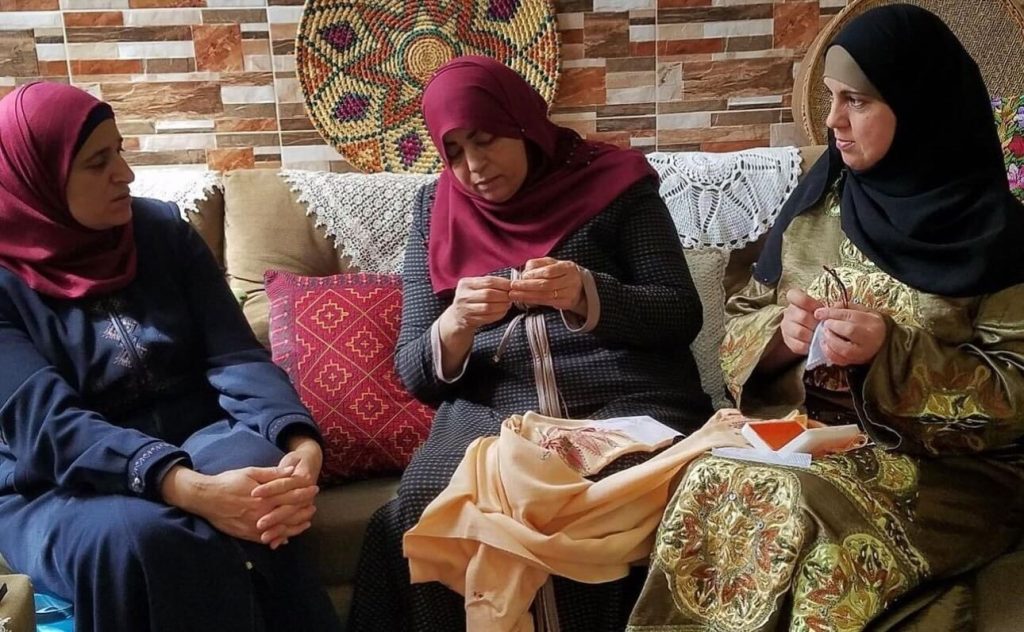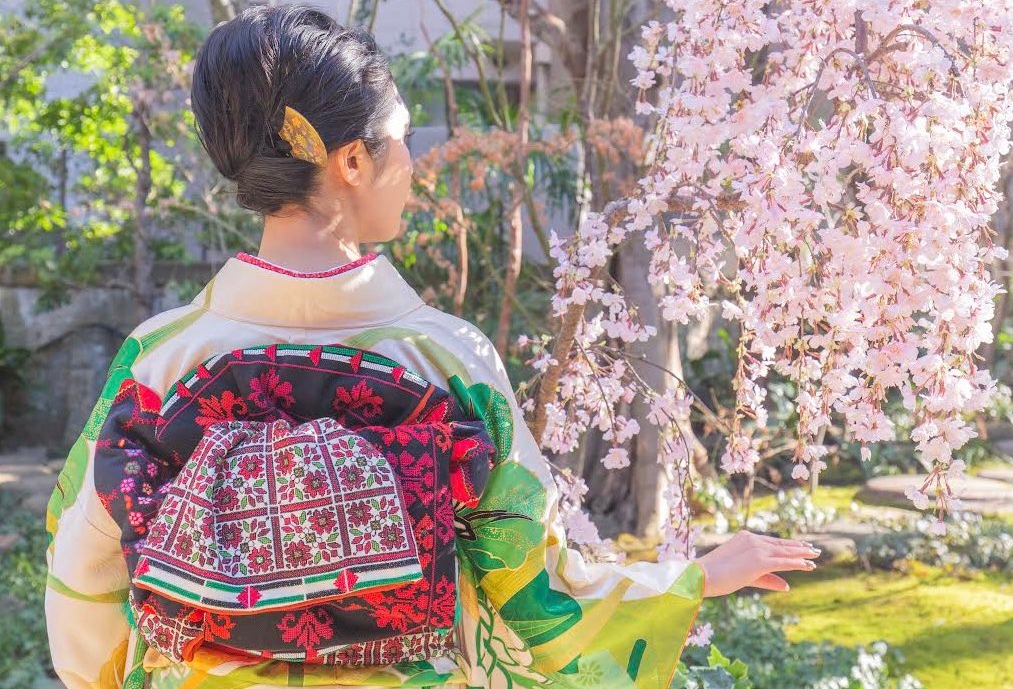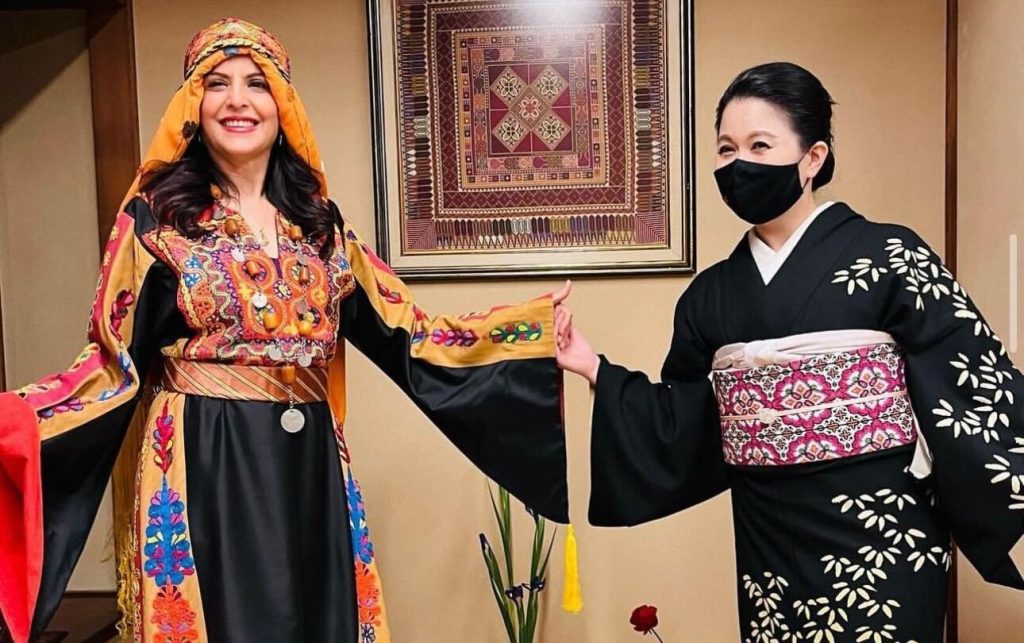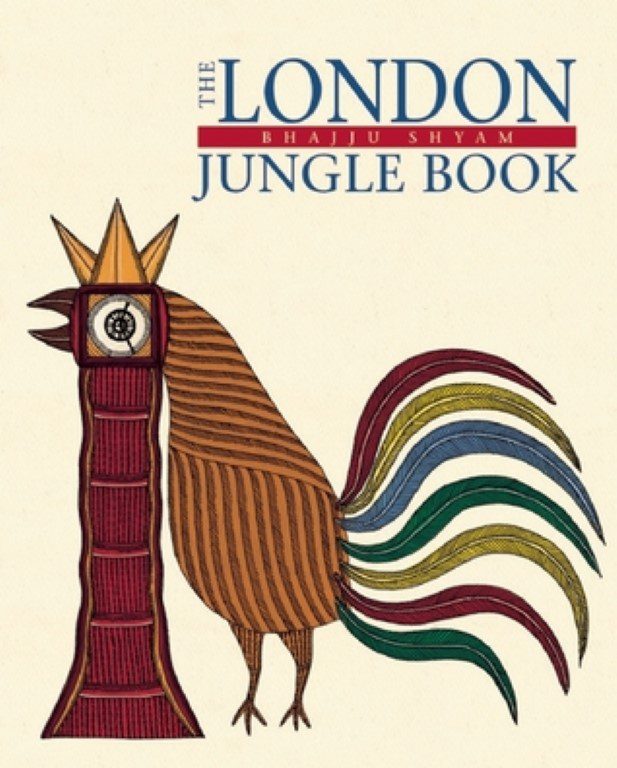This year, Japanese entrepreneur and designer Maki Yamamoto launched The Palestinian Embroidery Obi Project, a cross-cultural initiative that merges Japanese kimono traditions with Palestinian craftsmanship. The project features obi—the wide sashes traditionally tied around kimonos—embellished with tatreez, the symbolic cross-stitch embroidery practiced by Palestinian women for generations.
Yamamoto, whose professional background lies in cosmetics and pharmaceuticals, has visited Palestine more than a dozen times over the past decade. Her engagement with the region began after a 2013 visit to the West Bank, where she witnessed everyday life under occupation and met local artisans. Those encounters led to a resolve to support Palestinian women through cultural collaboration rather than charity.
The Palestinian Embroidery Obi Project is partly produced in the West Bank, with artisans from the Am’ari refugee camp in Ramallah currently handling most of the embroidery work. Production in Gaza has been halted due to the ongoing conflict. Yamamoto works with various local groups such as The Society of Inash al Usra, prioritizing authenticity and fair collaboration.

Each obi features traditional tatreez motifs—including roses, scissors, beads, and cypresses—each carrying region-specific symbolism. A popular design, the “roses and scissors” motif from Gaza, represents the region’s historic flower production and agricultural resilience.
Yamamoto chose the obi as her medium to avoid competing with NGOs that market tatreez on bags and shawls. Instead, she positions the work as a cultural bridge, introducing Japanese audiences to Palestinian embroidery while enriching kimono culture with cross-border craft traditions.
In her interpretation, both Japanese kogin stitching and Palestinian tatreez share common roots in rural life, originally developed to reinforce clothing and later refined into art forms steeped in identity. By fusing these two techniques, Yamamoto describes her project as a revival of “a modern Silk Road,” tying together Japan’s textile heritage and Palestine’s enduring artistry.

Through exhibitions in Tokyo and an expanding online presence, the project promotes awareness of Palestinian culture and highlights the role of craftsmanship in cultural diplomacy. For Yamamoto, the embroidered obi symbolizes more than fashion; it is a gesture of respect and solidarity between two ancient traditions connected by the shared language of needle and thread.
Contributor





